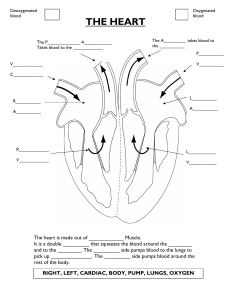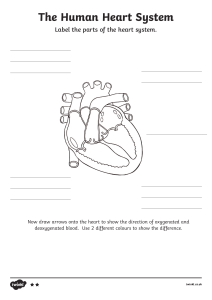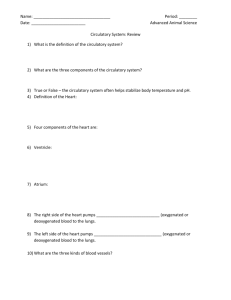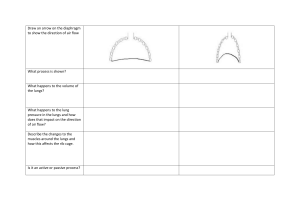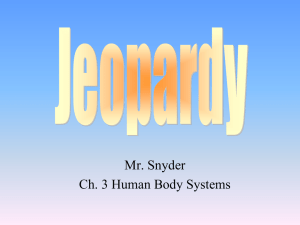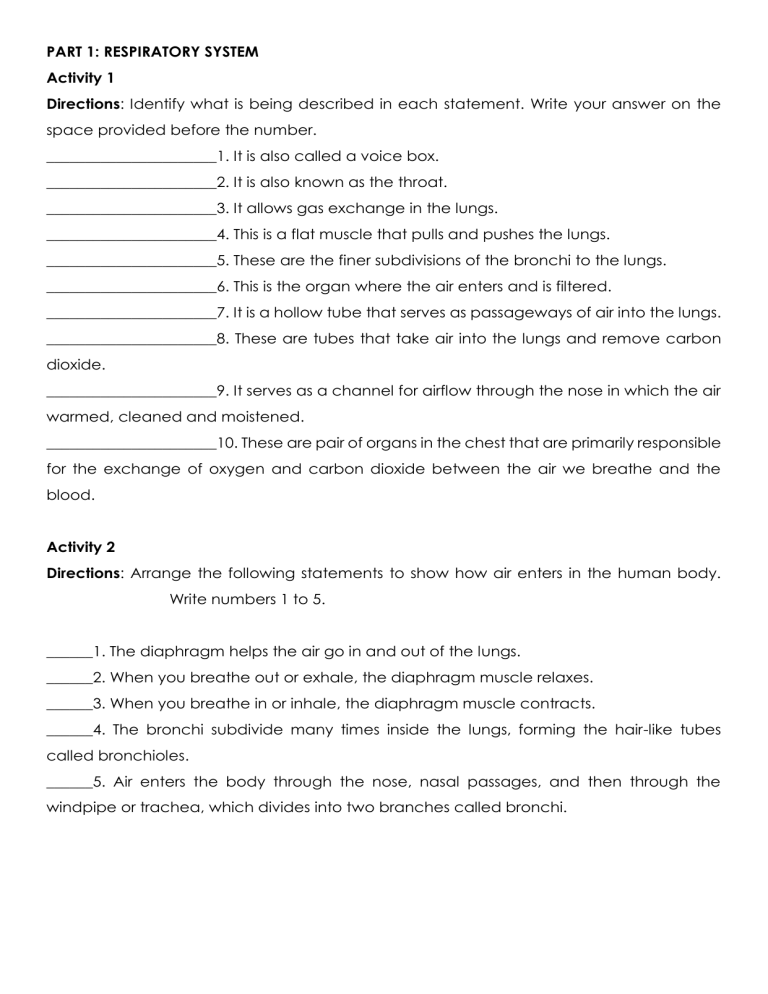
PART 1: RESPIRATORY SYSTEM Activity 1 Directions: Identify what is being described in each statement. Write your answer on the space provided before the number. ______________________1. It is also called a voice box. ______________________2. It is also known as the throat. ______________________3. It allows gas exchange in the lungs. ______________________4. This is a flat muscle that pulls and pushes the lungs. ______________________5. These are the finer subdivisions of the bronchi to the lungs. ______________________6. This is the organ where the air enters and is filtered. ______________________7. It is a hollow tube that serves as passageways of air into the lungs. ______________________8. These are tubes that take air into the lungs and remove carbon dioxide. ______________________9. It serves as a channel for airflow through the nose in which the air warmed, cleaned and moistened. ______________________10. These are pair of organs in the chest that are primarily responsible for the exchange of oxygen and carbon dioxide between the air we breathe and the blood. Activity 2 Directions: Arrange the following statements to show how air enters in the human body. Write numbers 1 to 5. ______1. The diaphragm helps the air go in and out of the lungs. ______2. When you breathe out or exhale, the diaphragm muscle relaxes. ______3. When you breathe in or inhale, the diaphragm muscle contracts. ______4. The bronchi subdivide many times inside the lungs, forming the hair-like tubes called bronchioles. ______5. Air enters the body through the nose, nasal passages, and then through the windpipe or trachea, which divides into two branches called bronchi. PART 2: CIRCULATORY SYSTEM Activity 3 Directions: Identify the parts of the circulatory system being described. Write your answer on the blank. 1. It pumps the blood throughout the body. ______________ 2. It carries the blood throughout the body. ______________ 3. It carries deoxygenated blood to the heart. ______________ 4. It carries oxygen and other materials throughout the body. ______________ 5. The smallest blood vessels in the body and the actual site where gases and nutrients are exchanged _________________ carry oxygenated blood away from the heart __________________. Activity 4 Directions: Fill in the blanks with numbers 1-7 to show how blood flows in the heart. _________A. The blood gets oxygenated in the lungs. _________B. Oxygenated blood goes back to the heart through the pulmonary vein. _________C. The blood moves in the right atrium and gets through a tricuspid valve. _________D. The blood flows in the right ventricle and travels to the pulmonary artery. _________E. The left ventricle pumps the blood throughout the body through the aorta. _________F. The left atrium receives the oxygenated blood and passes through the mitral valve. _________G. Deoxygenated blood passes through the superior vena cava and inferior vena cava. Activity 5: Respiratory and Circulatory Works Together Directions: Arrange the JUMBLED letters and identify the words that will help you trace how the respiratory and circulatory systems work together. _____________1. The SUNGUL takes in oxygen from the breath. _____________2. The oxygenated blood then enters the chamber, the FELT MURTIA. _____________3. Then the oxygenated blood will be pumped to the aorta through the FELT NETRIVLEC. _____________4. After supplying the oxygen to the cells, the deoxygenated blood enters another chamber called GIRTH MURTIA. _____________5. The GIRTH NETRILEC then pumps the deoxygenated back to the lungs to get oxygen again. PART 3: PATTERNS OF NON-MENDELIAN INHERITANCE Activity 6 Directions:
